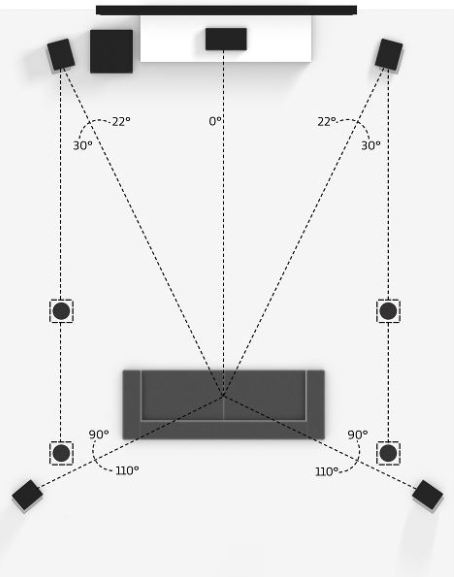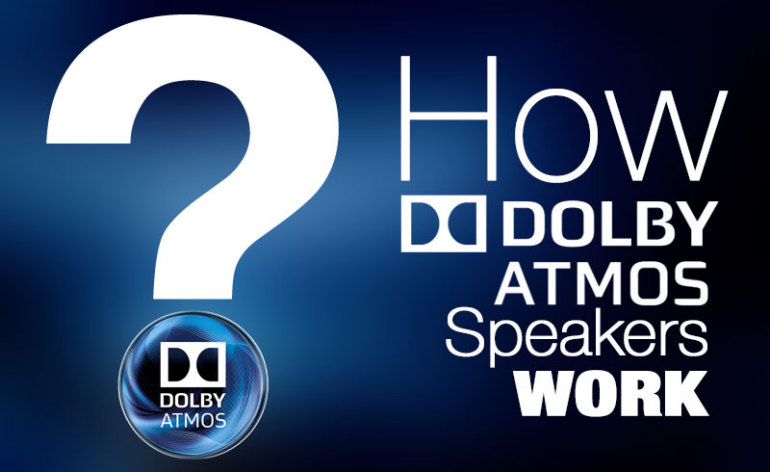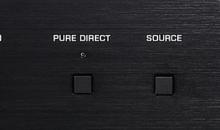How Dolby Atmos Speakers Work
As Dolby Atmos makes its rounds (they had a tremendous industry-wide rollout at the 2014 CEDIA Expo this year), there remains some confusion as to what is entailed in equipping your theater with speakers that can support the new format. Do you need to install speakers on your ceiling? How many? Can you use floor standing speakers to generate this new surround format? Is this the same as front “Presence” channels? Can bookshelf speakers support the new format? What is Dolby Atmos-enabled? How exactly do Dolby Atmos speakers work?
You get the idea. Lots of questions.
Two Kinds of Dolby Atmos Speakers
There are two kinds of Dolby Atmos speakers on the market today—and we’re not referring to style, but literally the mechanism by which the supply audio as needed to fulfill the requirements of the format. The first is a traditional in-ceiling speaker that can serve as the channel solution for the Dolby Atmos Height speakers. There can be either two or four height speakers, and they need to be positioned just in front of (in the case of two), and also behind (in the case of four) the listening position. The second kind of Dolby Atmos Speaker is the Atmos-enabled speaker, which is simply a speaker with a ceiling-firing speaker sitting on top. This may be integrated right into the speaker (non-removable) or an add-on module that you can buy separately to place atop a tower speaker or bookshelf speaker. Let’s look at how both of these play out in a typical 5.1 home theater:
Standard Dolby Atmos 5.1.4 System with In-ceiling Speakers

This is a standard Dolby Armos 5.1.4 system with in-ceiling speakers being used for the height channels (image courtesy of Dolby.com)
Dolby Atmos 5.1.4 System using Atmos-enabled Speakers

This is a Dolby Armos 5.1.4 system using Atmos-enabled speakers for the height channels (image courtesy of Dolby.com)
They both get the job done. In fact, I was scarcely able to tell the difference in several demos this year. Of note, if your ceiling is somehow covered in acoustical absorptive material then Dolby Atmos-enabled speakers will not be able to achieve the desired effect due to an inability to adequately reflect off the ceiling. Keep this in mind as you plan and design your system.
How Many Dolby Atmos Speakers Do I Need?
Two or four. Dolby Atmos can work with either two or four speakers, be they in-ceiling or Atmos-enabled. The idea is that two speakers placed just in front of the listening position (in-ceiling) or fired from the top of the front speakers (Atmos-enabled) will allow you a fairly adequate height experience. Four speakers will be even more enveloping, but sometimes that’s not possible or practical. The great thing is that you have options. You don’t have to wire up ceiling speakers if you can’t make that happen, and you don’t need four speakers if you’re only able to get an additional two lines run to the front for Dolby Atmos-enabled front towers. Dolby has done a great job of not only releasing a new surround format—but making it approachable by the regular-Joe consumer.
Are Dolby Atmos Speakers the same as front “Presence” Channels?
No. While companies like Yamaha were ahead of the crowd in a desire to bring more “height” to the surround experience, Presence channels occupy an area at the front of the room and fire information outward across the ceiling. Dolby Atmos speakers fire either downward from the ceiling, or fire up from speakers in order to bounce off of the ceiling. The difference is that Dolby Atmos—in addition to containing specific sound and DSP information for those channels—offers a more enveloping “top-down” experience. {presence channels are also not specifically encoded into the soundtrack or mix. Instead, they are “derived” using sophisticated DSP and EQ processing. Dolby Atmos height channels actually contain specific soundtrack information that produces those enveloping height surround effects.
More and more Dolby Atmos speakers are hitting the market each month, and if your favorite loudspeaker company hasn’t yet announced a solution you might want to shoot them an email or otherwise contact them to let them know you’re interested. As more and more consumer-driven interest grows, more and more manufacturers will follow suit. Right now, Atlantic Technology, Triad, Pioneer, Onkyo, Yamaha, and others are taking the lead—but there will soon be more.







Why NOT buy another Book Shelf Speake and set it on to another pointing at the Ceiling- or turn you Book shelf on it,s back- I see NO differance as the Specks seem the same- like facing a Subwoofer TOWARD the wall…
You didn’t explain how they work. Do they have special electronics is the speaker, cone different shaped, is the magnet bigger… what actually makes it work or can I just use any speaker and call it and atmos speaker?! (Of course I know I can’t but you don’t explain that!!)